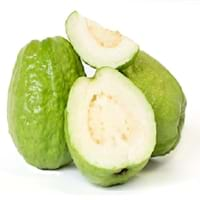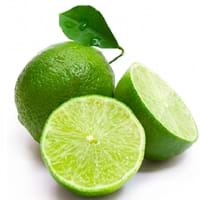Health Benefits
Cancer prevention, Diarrhea treatment, Prevents constipation, Scurvy treatment, Treatment of dysentary
Arthritis treatment, Cholera treatment, Gout treatment, Heart care, Piles treatment, Scurvy treatment
General Benefits
Controls blood pressure, Cures cough, Improves eye vision, Maintains healthy cholesterol level, Treatment of common cold
Cures fever, Digestive aid, Eye care, Maintains healthy cholesterol level, Treatment of common cold
Skin Benefits
Anti-aging benefits, Brightens and lightens complexion, Hydrates skin, Treatment of skin diseases
Anti-aging benefits, Skin rejuvenation, Treatment of acne, Treatment of dark spots
Hair Benefits
Prevents hair loss
Promotes longer and healthier hair, Treatment of dandruff
Allergy Symptoms
Breathing difficulty, Coughing, Runny nose, Sneezing, Swelling of mouth, tongue or lips, Wheezing
Breathing difficulty, Coughing, Eye irritation, Hives, Inflammation, Nasal congestion, Runny nose, Skin rash, Wheezing
Side Effects
Hair thinning, Nail thinning, Skin problems, Tooth decay, Weakness, Possibly unsafe during pregnancy
Chances of sunburn
Best Time to Eat
As a snack in the late afternoon, Don't consume at night and before bed, Eat the fresh ones, avoid mixing with any other foods, don't eat after meal., Morning time (before lunch)
Along with meal, Best to drink warm water with lime on an empty stomach, Don't consume at night and before bed
Vitamin B5 (Pantothenic Acid)
Vitamin C (Ascorbic Acid)
Vitamin K (Phyllochinone)
Calories in Fresh Fruit with Peel
Not Available
Calories in Fresh Fruit without Peel
Not Available
Calories in Frozen Form
Not Available
Not Available
Calories in Dried Form
Not Available
Type
Tree fruit, Tropical
Citrus, Tree fruit
Season
All seasons
All seasons
Varieties
Lucknow 49, Allahabad Safeda, Chittidar, Harijha, Apple guava, Hafshi, Arka Mridula and Allahabad Surkha
Key lime, Persian lime, Kaffir lime, Desert lime, Palestine Sweet Lime, Mexican Sweet Lime, Mary Ellen Sweet Lime
Color
Green, Pink, Yellow
Green
Inside Color
White
Light Green
Taste
Sweet-Sour
Acidic, Sour
Origin
Central America, Mexico, South America
India
Soil Type
Loam, Rocky, Sandy
Clay loam, Sandy loam
Climatic Conditions
Sunny
Sunny, Warm to hot climate
Facts about
- The black pigment in Guava leaves is used for textile applications.
- Guava leaves are used to make tea.
- Oils extracted from guava seeds are used in various cosmetics.
- Guava wood is used for decorative purposes.
- Lime is the called as the powerhouse of flavors.
- Fresh lime juice is so acidic that it can dissolve concrete.
- Limes are more fragrant and acidic than lemons.
- Persian limes are almost seedless and thorn less.
Other Countries
China, Indonesia, Mexico, Nigeria, Pakistan, Philippines, Thailand
Argentina, Brazil, India, Mexico
Top Importer
Canada
United States of America
Top Exporter
India
Mexico
Botanical Name
Psidium guajava
Citrus aurantifolia
Synonym
Not Available
not available
Subkingdom
Tracheobionta
Tracheobionta
Division
Magnoliophyta
Magnoliophyta
Class
Magnoliopsida
Magnoliopsida
Order
Myrtales
Sapindales
Family
Myrtaceae
Rutaceae
Species
Psidium guajava
C. aurantifolia
Generic Group
Myrtle
Citrus fruit
Difference Between Guava and Lime
We might think that Guava and Lime are similar with respect to nutritional value and health benefits. But the nutrient content of both fruits is different. Guava and Lime Facts such as their taste, shape, color, and size are also distinct. The difference between Guava and Lime is explained here.
The amount of calories in 100 gm of fresh Guava and Lime with peel is 68.00 kcal and Not Available and the amount of calories without peel is Not Available and 30.00 kcal respectively. Thus, Guava and Lime belong to Low Calorie Fruits and Low Calorie Fruits category.These fruits might or might not differ with respect to their scientific classification. The order of Guava and Lime is Myrtales and Sapindales respectively. Guava belongs to Myrtaceae family and Lime belongs to Rutaceae family. Guava belongs to Psidium genus of Psidium guajava species and Lime belongs to Citrus genus of C. aurantifolia species. Beings plants, both fruits belong to Plantae Kingdom.









